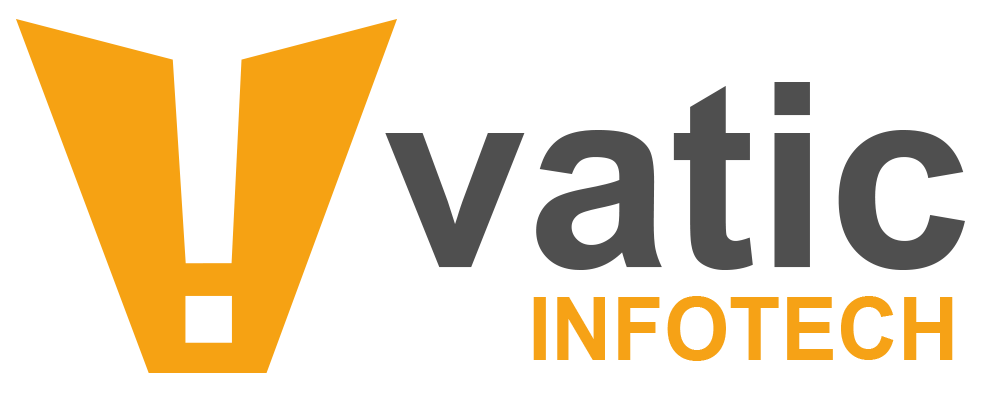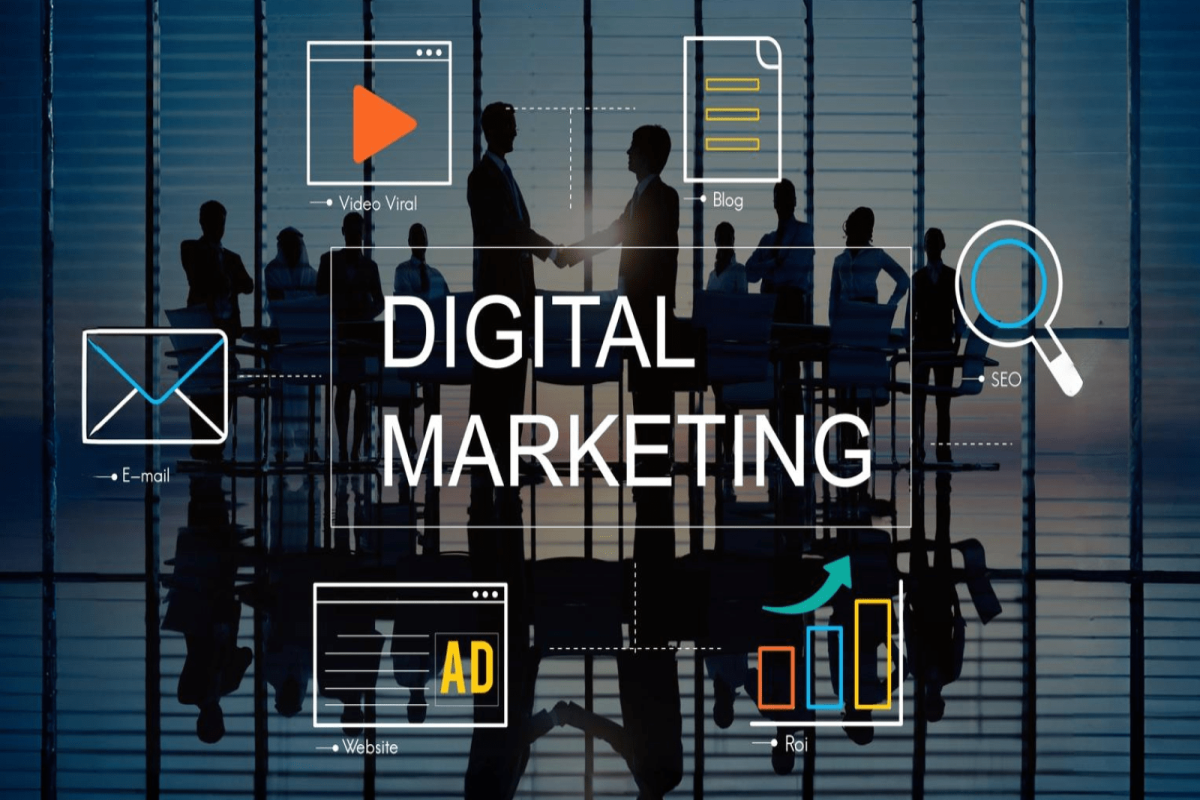At Vatic Infotech, we deliver innovative digital solutions that empower brands to succeed. Your growth is our mission.
- Pankaj Mehta
- Digital Marketing
- November 04, 2025
- 126
Digital Marketing Strategy: The Complete Playbook
In today’s fast-paced digital landscape, having a robust digital marketing strategy is essential for businesses that want to boost brand awareness, attract targeted traffic, and drive meaningful conversions. This playbook dives into the core elements of digital marketing in 2025, offering actionable insights and step-by-step guidance tailored to evolving market trends and consumer behaviours.
Whether you are a small business owner or a digital marketing professional, this guide will help you understand key strategies from Search Engine Optimization (SEO) services and PPC to social media marketing and analytics designed to build lasting online success.
Understanding Digital Marketing Fundamentals
Digital marketing is the practice of promoting products and services using online channels — including search engines, social media, email, and paid advertising. Unlike traditional marketing, it offers interactive engagement, precise measurement, and continuous optimisation.
Key Components
Here are the primary pillars of digital marketing:
- SEO (Search Engine Optimization): Enhances organic visibility on search engines.
- Content Marketing: Produces valuable content to attract and convert customers.
- PPC (Pay-Per-Click) Advertising: Drives immediate traffic through paid ads on platforms like Google Ads and Facebook Ads.
- Social Media Marketing: Engages audiences on platforms such as Instagram, TikTok, and LinkedIn.
- Email Marketing: Builds relationships via personalised communication.
- Analytics: Provides data-driven insights to optimize campaigns.
Defining measurable goals — such as traffic growth, lead acquisition, and sales conversions — is the foundation of an effective digital marketing strategy.
According to recent data, the global digital marketing and advertising market continues to expand, underlining how critical this domain is for business growth.
Conducting Market and Competitor Research
Knowing your audience and your competitors is crucial to crafting a winning strategy.
Audience Segmentation and Buyer Personas
Use tools like Google Analytics and Facebook Audience Insights to segment your audience by demographics, behaviours, interests, and location. Build detailed buyer personas that represent your ideal customers’ motivations, pain points, and decision-making triggers.
For example:
- What age range does your typical customer fall into?
- What are their biggest frustrations?
- What do they value when choosing a product or service?
Competitor Analysis
Analyse competitors’ websites, content strategies, backlink profiles, and ad campaigns using tools such as SEMrush or Ahrefs. Identify gaps or untapped opportunities where your brand can differentiate.
By combining audience and competitor insights, you position your strategy for relevance and competitive advantage.
Building Your Digital Marketing Strategy
Once you have the research in place, it’s time to align your marketing objectives with your overall business goals.
Align Marketing Objectives with Business Goals
For instance:
- Business goal: Increase revenue by 20% in the next 12 months.
- Marketing objective: Increase qualified lead generation by 30% via digital channels.
- Tactics: Prioritise SEO for long-term organic growth; use PPC for immediate traffic uplift.
Channel Selection and Tactics
Select channels and tactics that align with your target audience. For example:
- Use SEO and content marketing if you aim for sustained organic growth.
- Use PPC if you need immediate visibility or want to promote a time-sensitive offer.
- Use social media if your audience is highly active there.
Budget Planning and Resource Allocation
Allocate budgets based on each channel’s ROI potential. Include costs for:
- Technology (tools, platforms)
- Human resources (content creators, campaign managers)
- Content creation (blog posts, videos, graphics)
- Ad spend (PPC, social media ads)
To give you perspective: recent reports state that many organisations expect high returns from digital marketing investments. For example, businesses earn on average approximately $5 for every $1 spent in digital marketing.
SEO Strategy Essentials
Search engine optimisation remains the backbone of digital visibility.
Keyword Research
Target a blend of high-volume and long-tail keywords. For example: “online marketing strategy 2025” (long-tail) vs. “digital marketing techniques” (higher volume). Use keyword-planning tools and check user intent.
On-page SEO Tactics
Ensure you optimise:
- Title tags
- Meta descriptions
- Header tags (H1, H2, H3)
- Image alt text
- Internal links
- Natural inclusion of keywords in content
Off-page SEO and Backlinks
Build authority by acquiring high-quality backlinks through guest posting, partner collaborations, and influencer mentions.
Technical SEO
Ensure your website is:
- Mobile-responsive
- Fast loading (page-speed optimisation)
- Secure (HTTPS enabled)
- Properly structured for crawling and indexing
Statistically: SEO drives over half (about 53 %) of website traffic for many organisations.
Content Marketing Strategy
Content remains king. Effective content builds trust, authority, and engagement.
Content Formats and Calendar
Develop a content calendar including:
- Blog posts
- Videos
- Infographics
- Podcasts
Example topic: “How AI is transforming social media marketing in 2025” — to attract tech-focused marketers.
Content Distribution
Leverage both:
- Owned channels (website, email newsletter)
- Amplified channels (paid social ads, influencer collaborations, syndication)
Measuring Success
Track metrics such as:
- Time on page
- Shares / social engagement
- Conversion rates (e.g., form fills, downloads)
- Bounce rate
Content marketing statistics reinforce its value: companies that blog receive up to 55 % more web traffic and marketers who prioritise blogging are 13× more likely to see positive ROI.
Pay-Per-Click (PPC) Advertising Strategy
PPC offers immediate visibility and targeted audience reach.
Platforms
Consider using:
- Google Ads
- Facebook Ads
- LinkedIn Ads
- TikTok Ads
Campaign Creation
- Craft compelling ad creatives and copy
- Use A/B testing for copy, visuals, and landing pages
- Make sure your landing pages are aligned with the ad promise
Budgeting & Bidding
Monitor:
- Cost Per Click (CPC)
- Return On Ad Spend (ROAS)
- Cost Per Action (CPA)
According to recent data: the average CPA for paid search is around $49, and display ads are about $75.
Social Media Marketing Strategy
Social media is no longer optional — it’s central to modern digital marketing.
Select Platforms Based on Audience
For example:
- B2B: LinkedIn, Twitter
- B2C: Instagram, Facebook, TikTok
Campaign Planning
Define content themes, posting frequencies, and engagement tactics such as live Q&As, stories, polls, user-generated content.
Paid Social & Influencers
Paid plus organic can be a powerful combo. Influencer partnerships drive trust and reach especially when combined with mobile app development solutions that engage users beyond social media platforms.
For instance: 59 % of marketers plan to partner with more influencers in 2025 than in the previous year.
Community Management
Respond promptly to comments and messages to build brand trust and loyalty.
Statistically: 66 % of marketers say digital marketing tactics helped increase their company’s credibility and trust.
Email Marketing Strategy
Despite the many new channels, email marketing continues to deliver excellent ROI when used correctly.
List Building
Grow and segment email lists based on user behaviour, demographics, and interests. Higher segmentation = better targeting = higher engagement.
Automation
Use drip campaigns, triggered emails (e.g., welcome series, cart abandonment), and personalisation (name, past purchases).
Some stats: more than 376 billion emails are sent daily, highlighting the scale of this channel.
Metrics
Focus on:
- Open Rate
- Click-Through Rate (CTR)
- Conversion Rate
- Unsubscribe Rate
According to research, email marketing yields as much as 3600 % ROI for some businesses.
Analytics and Reporting
Data is your compass. Without it, you’re flying blind.
Tools
Use platforms like Google Analytics 4 (GA4), Google Search Console, and your ad-platform dashboards.
Key Performance Indicators (KPIs)
Track across channels:
- Organic traffic
- Bounce rate
- Conversion rate
- Campaign ROAS
- Cost per acquisition (CPA)
Dashboard & Decision Making
Set up customised dashboards so you can monitor multiple channels at a glance. Use insights to reallocate budget, optimise campaigns, and refine strategies — continuously.
Emerging Trends in Digital Marketing 2025
Staying ahead means recognising and adapting to new trends.
- AI-Generated Content & Predictive Analytics: According to recent research, 88 % of marketers use AI in their daily roles and 73 % say AI plays a role in creating personalised customer experiences.
- Voice Search & Smart Assistants: As search behaviour shifts, brands need voice-search optimisation.
- Video Dominance Across Platforms: Video consumption & social video platforms are shaping content trends.
- Data Privacy & Consent Management: With evolving regulations and consumer awareness, data privacy and transparency are no longer optional.
Conclusion
A powerful digital marketing strategy blends research, creativity, technology, and continuous learning. Use this playbook to build your foundation and adapt to emerging trends. Remember: consistency, measurement, and optimisation are the keys to long-term success.
Stay curious, keep testing, and iterate your strategy as your business and market evolve.

Pankaj Mehta
Pankaj Mehta, CEO of Vatic Infotech, brings over 19 years of experience in digital transformation. His strategic leadership drives global growth through innovative web, app, and marketing solutions, leveraging AI, cloud, and SEO to maximize ROI and brand visibility.
About
At Vatic Infotech, we deliver innovative digital solutions tailored to your needs. Our team simplifies technology, drives growth, and builds smarter strategies to ensure your success today and in the future.


